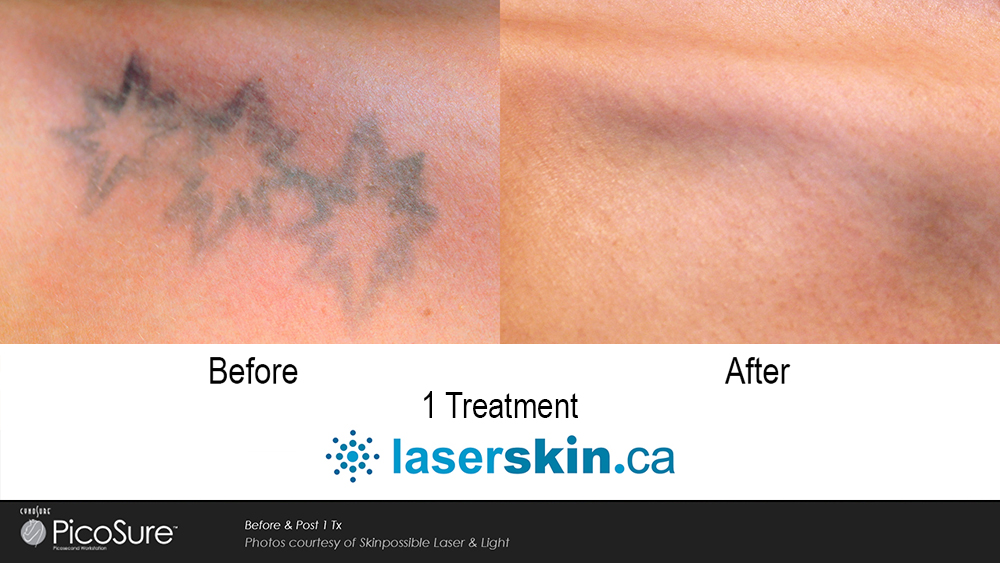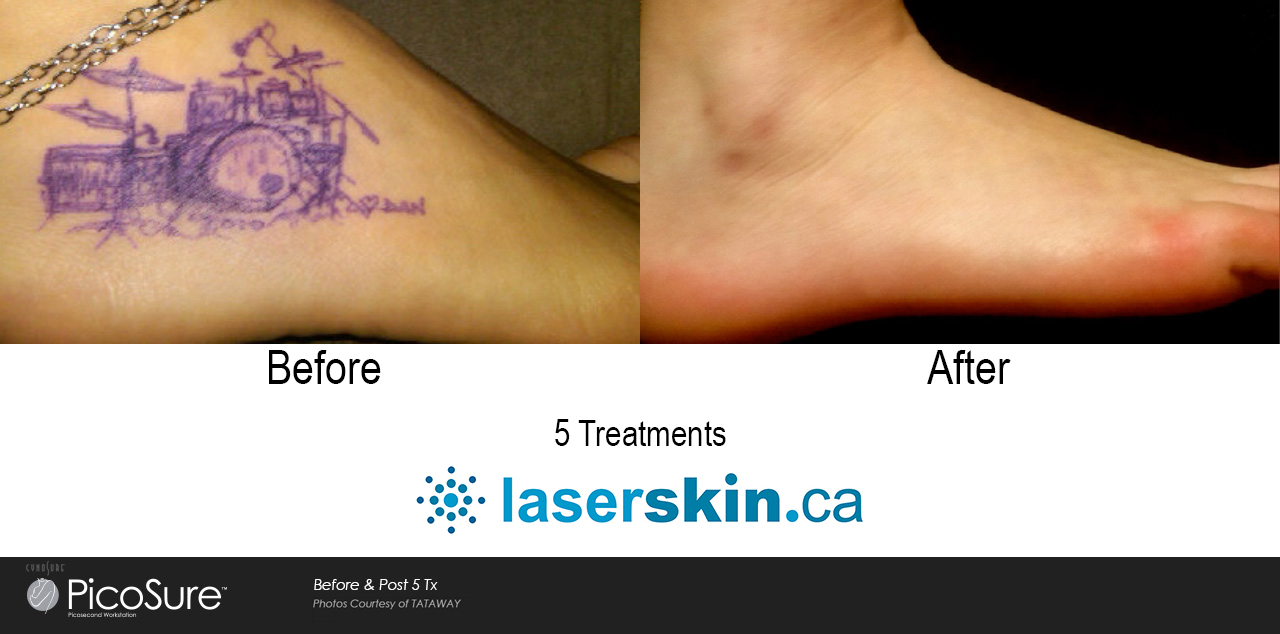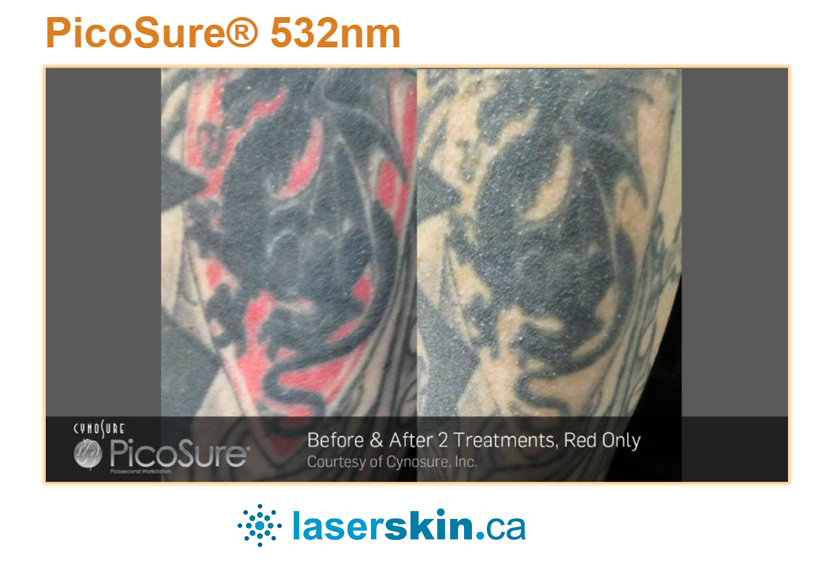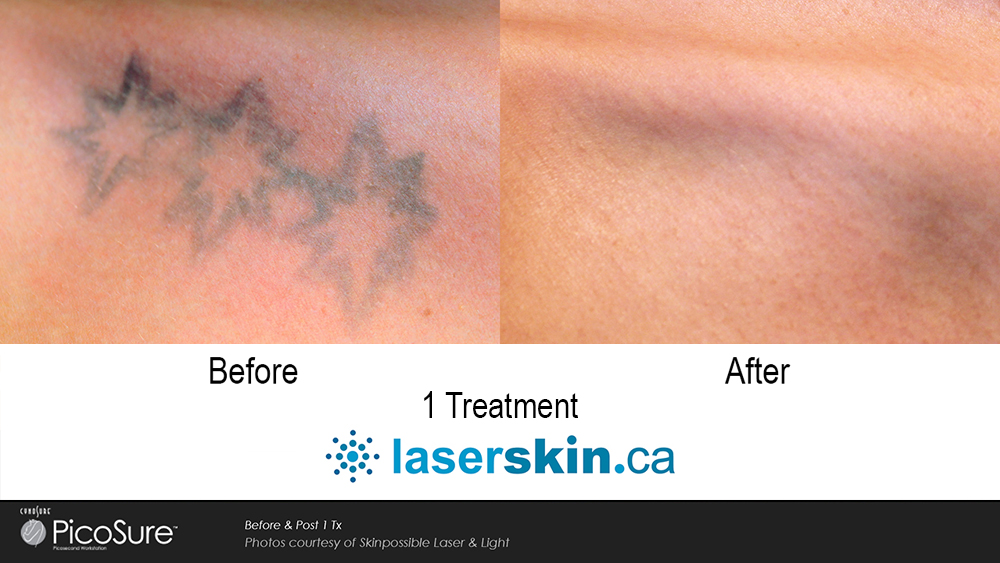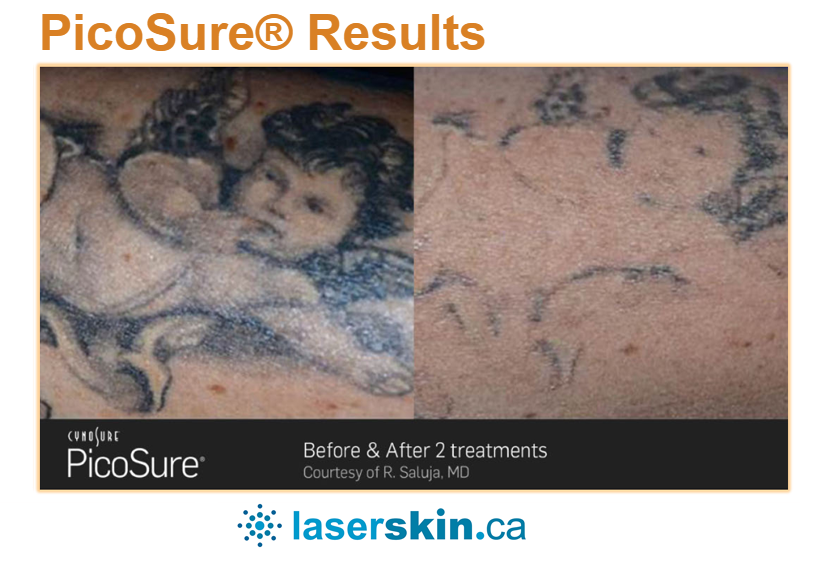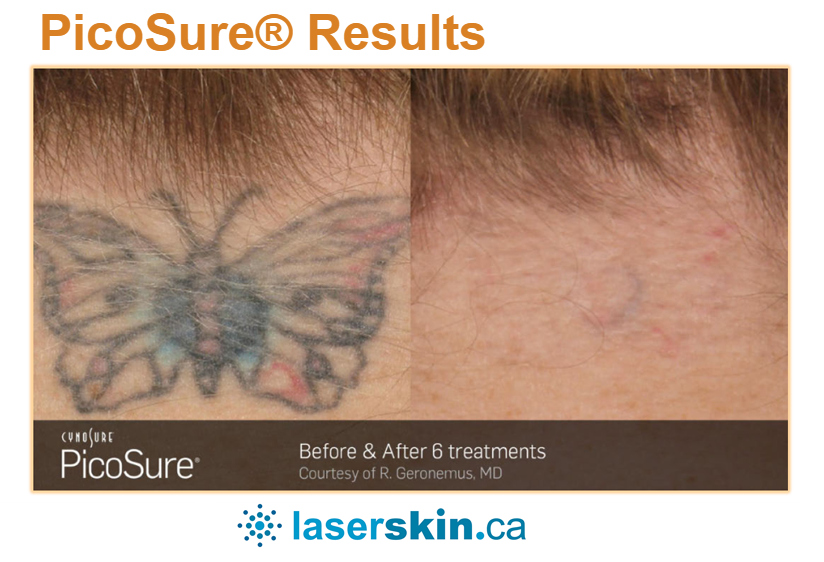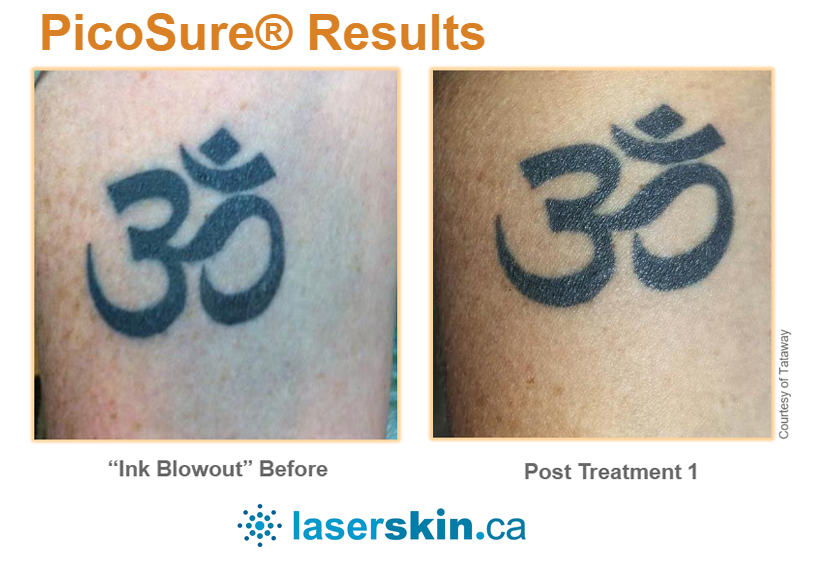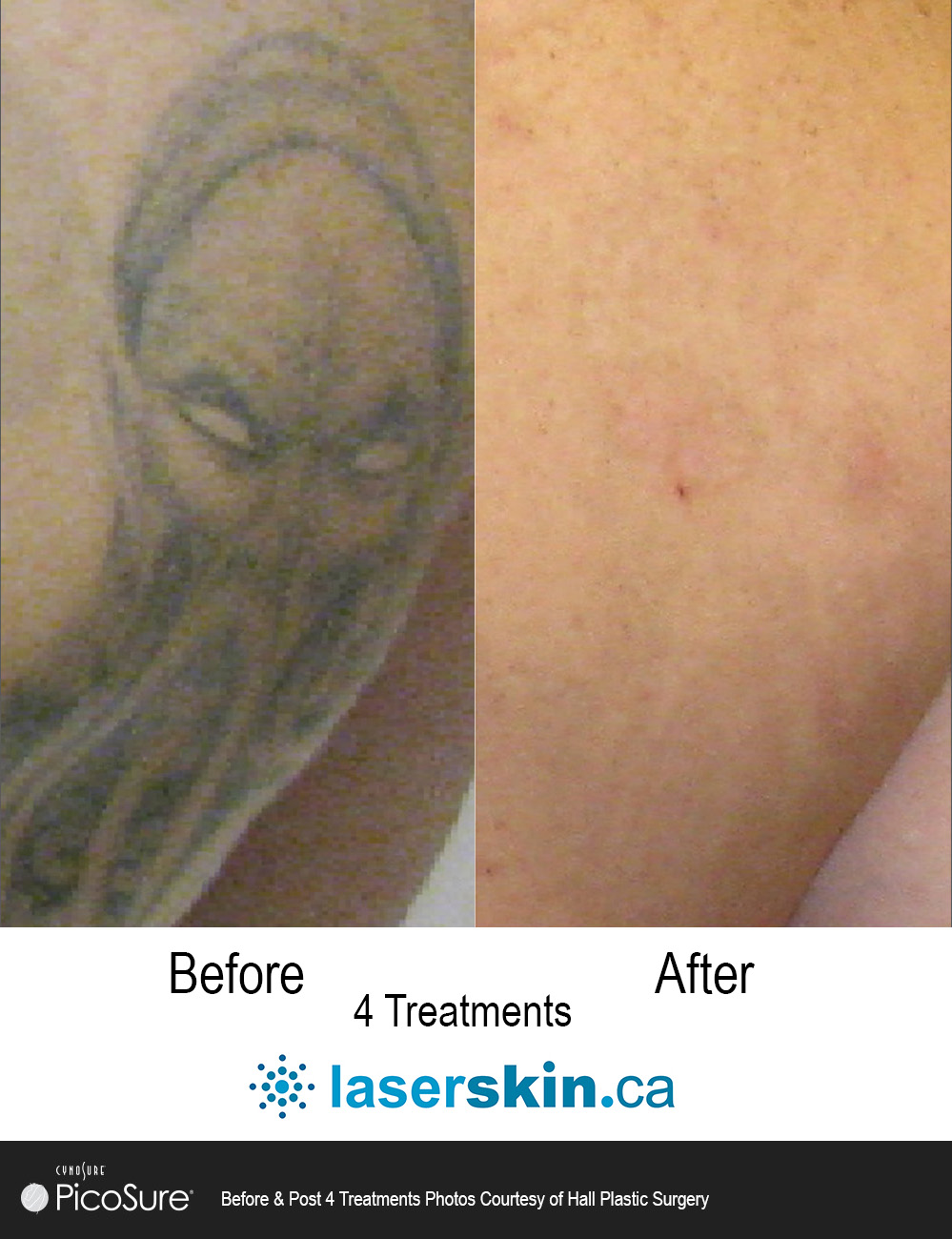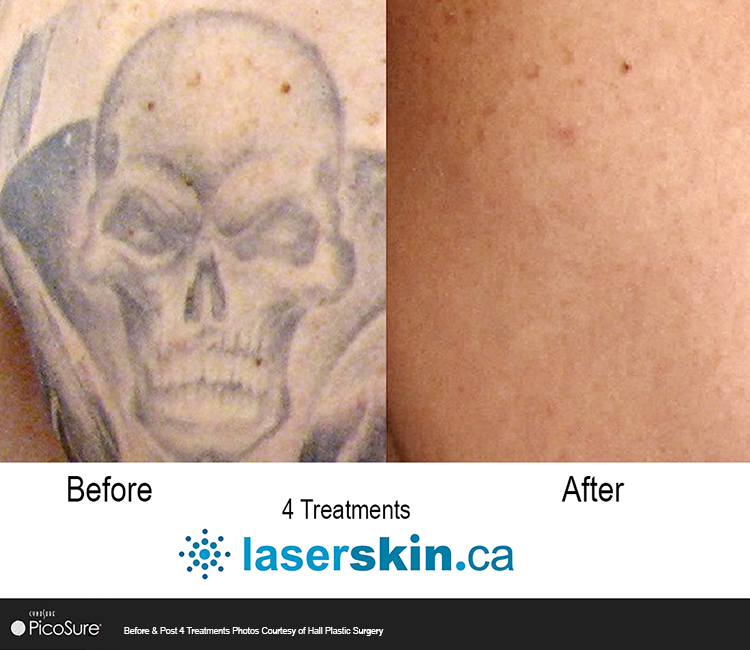
Table of Contents
Laser tattoo removal before and after
Are you looking for laser tattoo removal in Toronto? Our Cynosure’s PicoSure laser Toronto tattoo removal machine is the best device used today and the industry’s gold standard for laser tattoo removal. The PicoSure laser is the world’s first picosecond aesthetic laser-optimal wavelengths for treating tattoo removal. PicoSure’s technology creates a photothermal impact that causes significant heat damage to the skin but also protects the chromophore, allowing for better clearance and fewer treatments. Visit our laser tattoo removal before and after photos below.
The PicoSure® technology proves that tattoo removal has improved significantly over the years. In addition, research and various clinical studies have demonstrated that the picosecond 755-nm alexandrite laser is a safe and very effective device for tattoo removal.
PicoSure’s technology creates a photothermal impact that causes significant heat damage to the skin but also protects the chromophore, allowing for better clearance and fewer treatments.
- Incurs minimal thermal damage from the picosecond pulse duration
- targets the melanin to treat a range of pigmentary conditions
- treatments are customizable with 2-6mm, 8mm, and 10mm spot sizes
- Much clinical validation, with 59 abstracts and 26 publications to date
- The 755nm wavelength can target black, blue, and green tattoo inks. In comparison, the optional 532nm wavelength offers effective treatment of “sunset colours”—red, yellow and orange—which are typically hard to correct. You’ll also be able to:
- Tailor treatments using variable spot sizes
- Use boost mode to treat recalcitrant tattoos with shortened pulse widths better
- It can treat three wavelengths: 532nm, 755nm, and 1064 nm.
- It can treat black ink in darker skin types using the 1064nm delivery
Laser tattoo removal before and after
The advantages of laser tattoo removal
Tattoo removal requests have risen as the popularity of tattoos has grown. Laser tattoo removal is the most common tattoo removal treatment.
Since the late 1970s, lasers have been used to erase tattoos. For example, tattoo removal using an argon laser was attempted on 28 people in 1979 with minimal results.
Novel clinical research exploring the effects of Q-switched ruby laser light on blue/black tattoos was conducted in Scotland in the 1980s. Further research into different tattoo colours was conducted with varying degrees of success.
Thousands of tattoo pigment particles stay in the skin’s dermis after the ink is put into it. However, the photomechanical impact of laser treatment causes these particles to heat up and fracture into smaller bits. In most instances, macrophages transport ink particles to lymph nodes around the tattoo site. Macrophages are specialist immune cells that surround foreign particles and remove them from the body.
The energy absorbed by the ink particles during the photomechanical effect is measured in nanoseconds. Four factors determine the degradation of tattoo pigments by laser tattoo removal:
- The tattoo pigment must absorb the laser light’s colour more readily than the surrounding skin. As a result, various tattoo pigments need distinct laser colours. Green tattoo colours, for example, absorb red light, but yellow does not.
- The laser energy’s pulse (time) duration must be concise.
- Each laser pulse must give enough energy to heat the pigment to fragmentation.
- The light’s colour must penetrate deep into the skin to reach the tattoo pigment.
Different lasers erase different colours of tattoos.
- Q-switched Ruby’s wavelength is 694 nm. As a result, green and dark tattoo pigments absorb the red light produced by this laser.
- Q-switched 755 nm for Alexandrite This laser absorbs green pigment but not red, orange, yellow, brown, or other colours. It is available at picosecond speed and promises to erase ink more quicker.
- Q-switched 532 nm for frequency-doubled Nd: YAG. This laser emits green light, which is absorbed by red, yellow, and orange pigments.
- 1064 nm for Q-switched Nd: YAG. Because the light isn’t absorbed by melanin like the ruby, it works better on darker skin.
- Picosecond laser pulses are more effective than nanosecond pulses in removing black tattoos. However, the difference between Q-switched and polychromic tattoos is negligible.
How Many PicoSure Laser Treatments Are Needed to Remove a Tattoo?
The Kirby-Desai scale is often used to determine the likelihood of success and the number of sessions required for laser tattoo removal. Unfortunately, patients are usually given an inaccurate appraisal of the number of therapies available, and they typically participate in the process without fully understanding the likelihood of success. Six characteristics are assigned numerical values in the Kirby-Desai scale: skin type, location, colour, the quantity of ink, scarring or tissue alteration, and layering.
The average number of laser tattoo removal sessions needed was 8, ranging from 3 to 20 treatments. Treatments must be scheduled six weeks apart.
Patients with Fitzpatrick skin types (darker skin) are unsuitable for laser tattoo removal. In addition, because they use the laser on lower settings to minimize undesired side effects like hypopigmentation, they often need longer wait periods between treatments.
Set up a free consultation today
Are you looking for laser tattoo removal in Toronto? Fill out our online form, submit a few images of your tattoo, and we’ll contact you with the pricing and any questions you may have. Contact our tattoo removal Toronto or Richmond Hill Clinic. CLICK HERE

